Winter is the perfect time to make this herb kvass! It’s a bubbly, fermented drink that is traditionally made with beets, but can be made with any vegetable that ferments well. This fermented probiotic beverage is a wonderful winter drink with tons of health benefits, and the perfect drink to make for the holiday season.
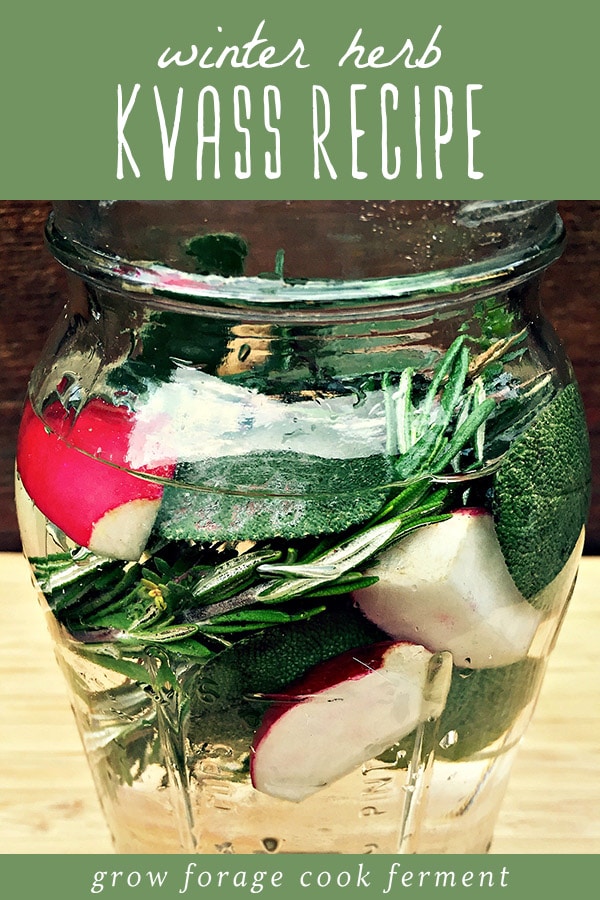
Want to save this post for later?
What is Kvass?
What is kvass you ask?
Kvass is a bubbly, fermented drink that is traditionally made with beets, but can be made with any vegetable that ferments well. Sweet potato fly is another delicious version of kvass!
This herbal kvass recipe calls for a few handfuls of winter herbs, plus a radish, all of which are fairly easy to find this time of year.
When it’s the cold and rainy (or snowy, depending on where you live) winter season, oftentimes the only greenery left in the garden is perennial herbs.
This may be why sage, rosemary, and thyme are so prevalent in seasonal winter dishes and holiday meals. I never even thought about fermenting these evergreen herbs until now!
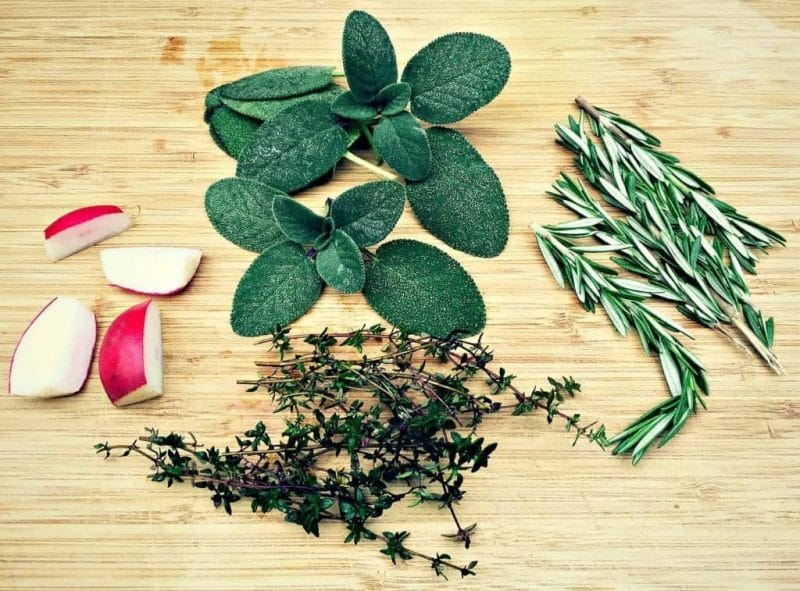
Winter Herb Kvass Recipe
I recently got a chance to look over a copy of the Ferment Your Vegetables book by Amanda Feifer (aka Phickle), and absolutely had to make this Winter Herb Kvass recipe!
Here is what you will need:
- Handful each of sage, rosemary, and thyme
- 1 radish, cut into quarters
- ¼ teaspoon sea salt
- Filtered or non chlorinated water
The recipe in the book makes one gallon, but I decided to use a wide mouth half gallon jar as that’s what I had on hand.
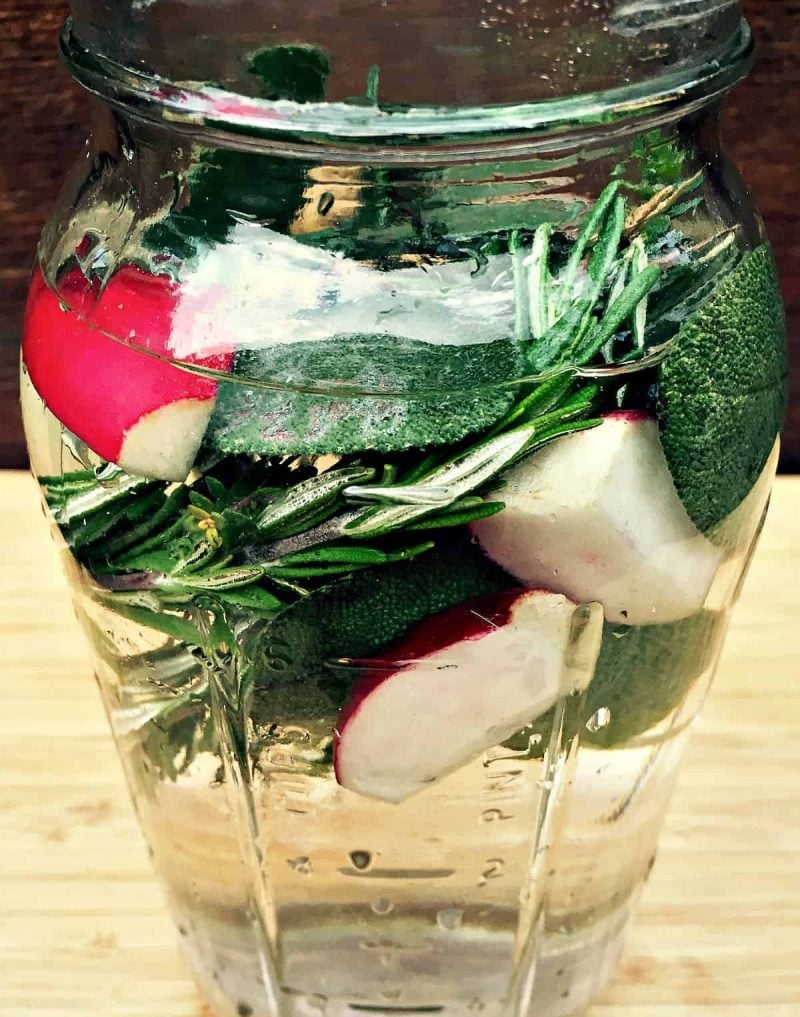
Ferment the Herbal Kvass
This recipe is very simple!
Basically, put all of the herbs, the radish, and the sea salt into your jar and cover with water, leaving about two inches of head space at the top.
Cover with a loose lid, so that the carbon dioxide can escape, and put into a quiet and dark corner of your kitchen for 5-7 days.
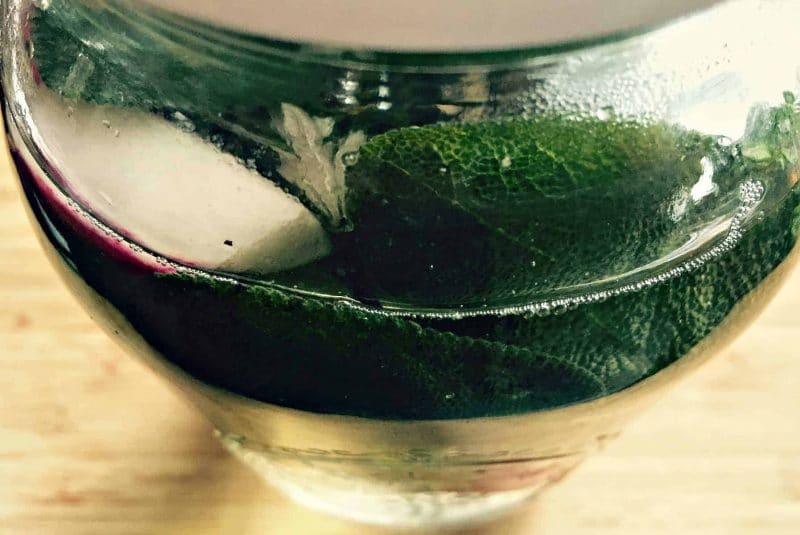
You should eventually start to see a few bubbles on the surface, this is a good thing!
The water will become slightly cloudy and the herbs may lose a bit of their freshness, but it should smell herbaceous and wonderful.
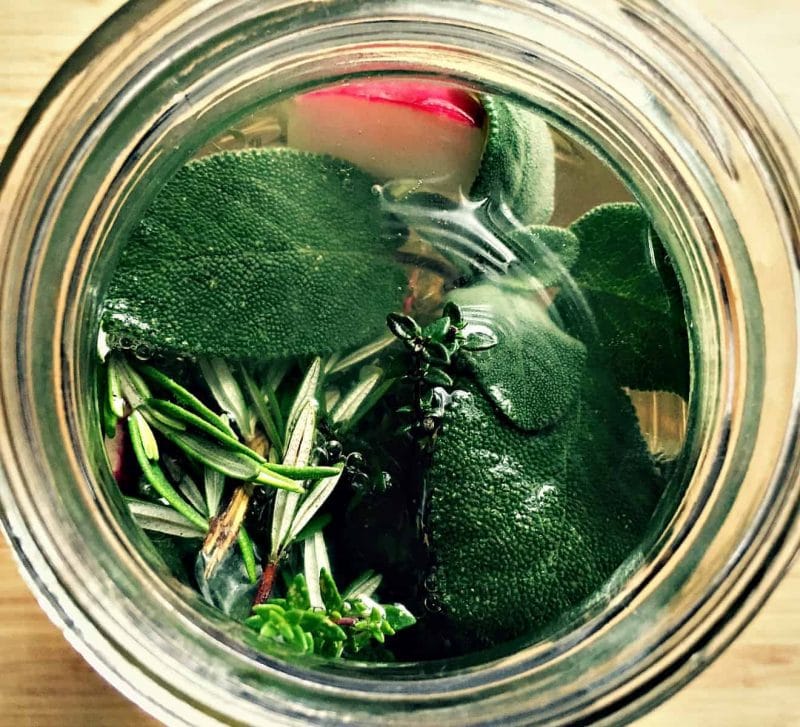
Strain & Serve the Kvass
Strain out the herbs and serve chilled, maybe even with a rosemary sprig as a garnish.
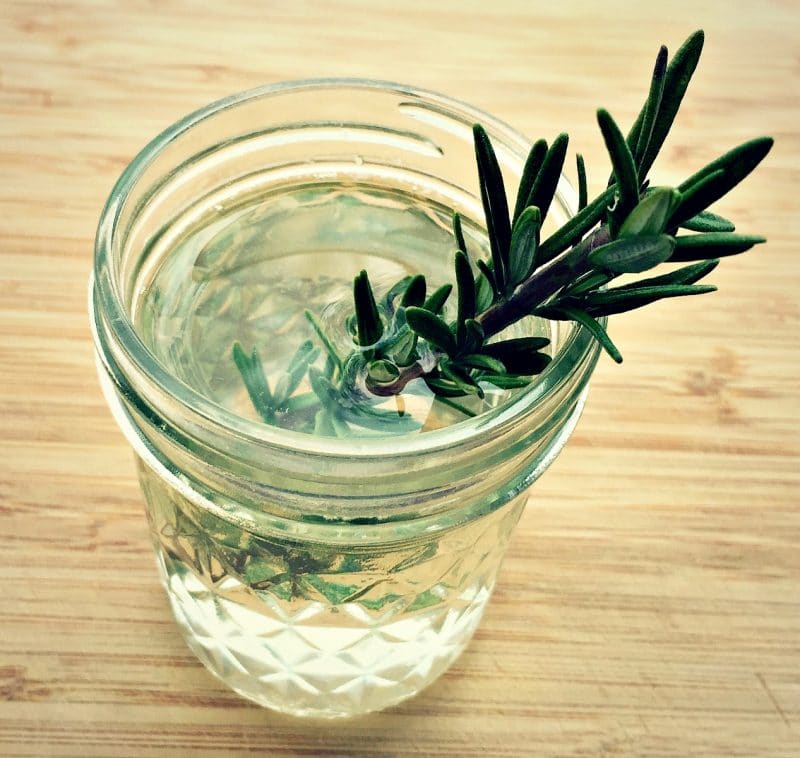
If you let your winter herb kvass go a little longer than 7 days it may take on more of a woodsy flavor, which Amanda says is wonderful in her recipe for Woodsy Gin and Tonic.
Now that sounds like my kind of drink!
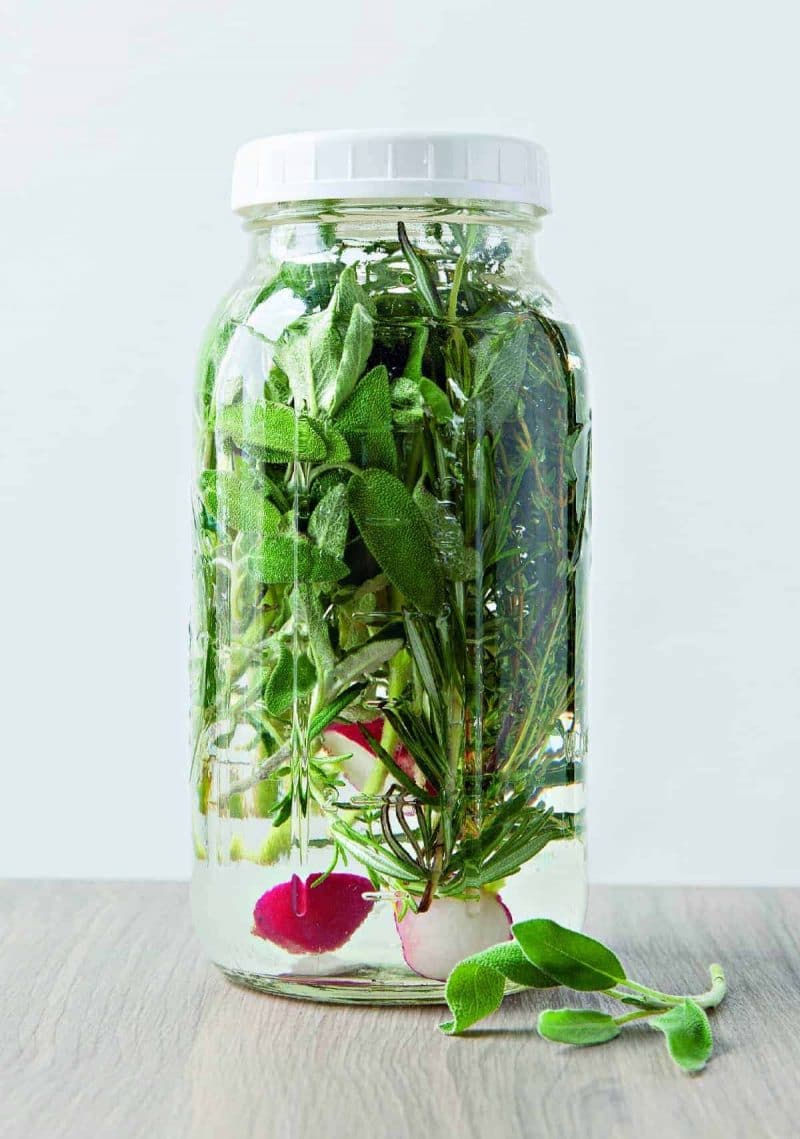
Ferment Your Vegetables Book
In fact, everything about the Ferment Your Vegetables book is super cool! There are a ton of great fermenting recipes, along with some tips and tricks along the way.
There are whole chapters on pickles, krauts, kimchi, and kvass, as well as recipes for fermenting in crocks.
This is a great book for anyone interested in all kinds of vegetable ferments, and would also make a great gift!
This winter herb kvass is a new favorite, a perfect holiday and wintertime drink!
What is your favorite fermented drink?
Naturally Fermented Soda Recipes
Here are some more naturally fermented soda recipes for you to try.
- 12 Fermented Soda Recipes
- Strawberry Rhubarb Soda
- Fermented Root Beer
- Fermented Elderberry Soda
- Turmeric Soda
- Sweet Potato Kvass
- Herbal Water Kefir Soda
- Strawberry Water Kefir Soda
- Homemade Soda with Yarrow
Winter Herb Kvass
Equipment
Ingredients
- 1 handful fresh sage
- 1 handful fresh rosemary
- 1 handful fresh thyme
- 1 radish cut into quarters
- ¼ teaspoon kosher, pickling, or sea salt
- filtered or non-chlorinated water
Instructions
- Put all of the herbs, the radish, and the sea salt into a half-gallon jar and cover with water, leaving about two inches of head space at the top
- Cover with a loose lid, so that the carbon dioxide can escape, and put into a quiet and dark corner of your kitchen for 5-7 days.
- A few bubbles will appear on the surface. The water will become slightly cloudy and the herbs may lose a bit of their freshness, but it should smell herbaceous and wonderful.
- Strain out the herbs and serve chilled, maybe even with a rosemary or thyme sprig as a garnish.
Notes
- If you let your winter herb kvass go a little longer than 7 days it may take on more of a woodsy flavor.
- This recipe is from the Ferment Your Vegetables book by Amanda Feifer (aka Phickle).
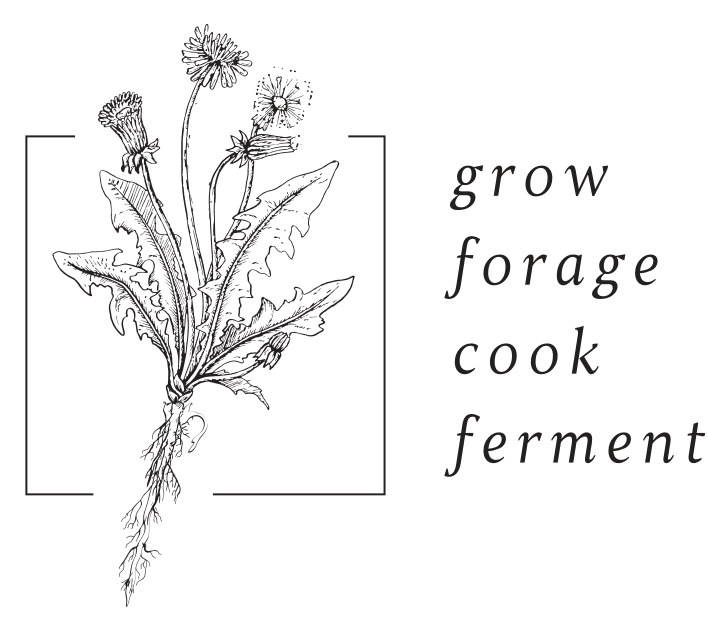
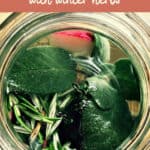
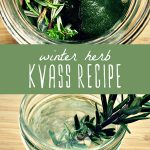
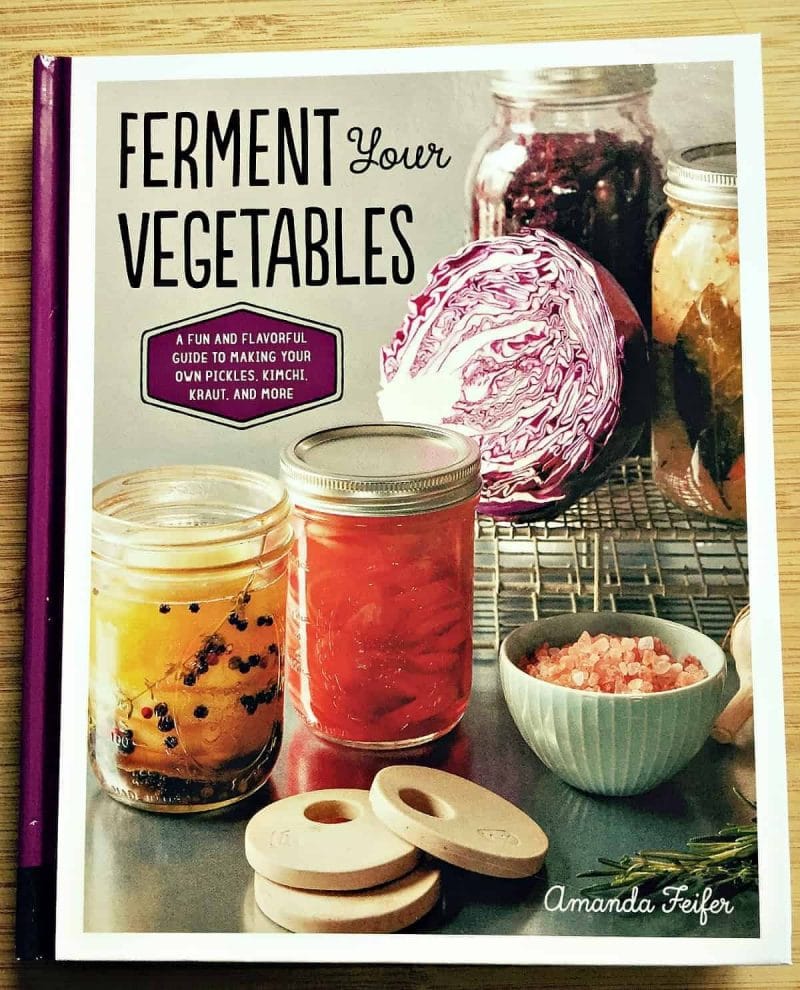
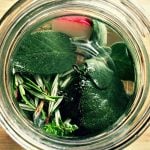

What’s the purpose of the radish as far as understanding if I can substitute something else…I make beet kvass a lot. If i wanted to make this version, could i use one beet instead of a radish? And can I add some dried herbs? I was thinking catnip would be relaxing!
Hi there. Yes, of course you can modify this recipe and make it your own!
So I followed this recipe and let it sit for 7 days. How bubbly exactly is bubbly at the top? I’m assuming not quite as much as a seltzer water? There are only a handful of bubbles on mine so I’m not quite sure how to tell if it worked.. Also mine has a bit of mold on the top so I probably won’t be tasting this first batch anyway…
Hi Eli. It won’t be as bubbly as seltzer water. If there are bubbles at all, it means it’s fermenting. Are you sure what’s on top is mold? Is it a white film? If so, it’s likely kahm yeast, a perfectly safe yeast that forms when all the sugar is used up during the fermentation process.
Im really sorry but this drink has nothing to do with the name of “kvass” as well as beet itself. Kvass always made from rue flour with special yeast fermentation. Telling it as Slavic heritage.
I guess it’s one of those things in which language takes off on its own… As in “beet kvass” made with a hunk of sourdough took off from “kvass” and then plenty of people began to ferment without that hunk of bread, then began to ferment other things but the name “kvass” remained….
Jerusalem artichokes are fabulous fermented, and they don’t give you gas then! (“Fartichokes” haha).
This looks great! Thanks for posting it. I’m a big fan of fermenting. Mead, wines, I’ve even started to ferment some of my chicken feed. They chickens really love it in winter.
Love Kim chi, and I used to hate it!
Cabbage for kraut and kimchee
Pickles and beets!
cabbage!!!
Cauliflower!
My favourite fermented vegetable is kimchi. Slightly cheating as it’s lots of different vegetables, not one.
This is one fermenting book I don’t have! Yeah! I love this herbal idea! I am a beet kvass drinker regularly.
Sauerkraut.
I love fermented pumpkin!
Fermented pumpkin, I’d love to do that can you tell me how?
Thank you
I would love to learn how to ferment things! Saurkraut is the only thing that comes to mind.
I love, love, love fermented snow peas!
New to fermenting. Sauerkraut is my favorite
My favorite fermented veggie is cabbage. I know, it’s boring but I really like it.
I’ve just begun fermenting foods & have had great success with Jun Tea & not so great success with sauerkraut. My first attempt was wonderfully delicious, the next batch was terrible. I’ll keep trying :)
Yum! I make beet kvass, but I didn’t know you could use other veges and herbs. I find that my sage doesn’t grow throw winter after we get frost, but usually regrows when it warms up again. Its summer here, so I have sage, rosemary and thyme growing. That looks like a great book!
Looks great and I am going to try it today!
What do you do with the left-over herbs after the fact? Can you still cook with them or is it just straight to the compost?
I am just beginning to really wrap my head around the “ferment anything/everything” idea, and it’s really exciting. This herb bevvie, for example, is now #1 on my list to try. Thanks!
Looks awesome! Sometimes the beet version can be a bit earthy…